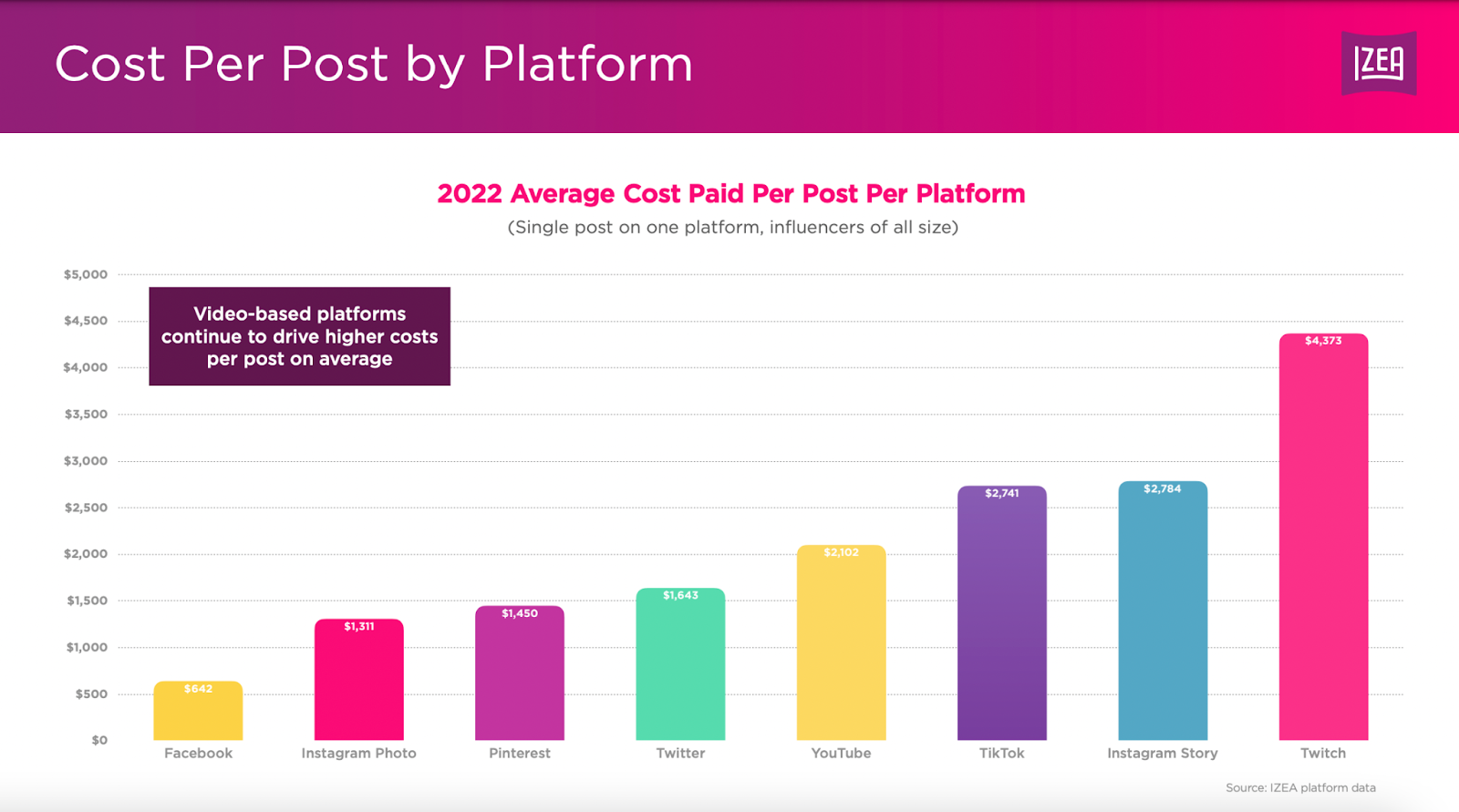Influencer
20 min read
This influencer marketing statistics guide covers our latest IZEA Insights, our ongoing influencer marketing research series focusing on influencers’ key roles in influencing consumer behaviors and trends.
According to Insider Intelligence, spending on brand sponsorships will hit $6.16 billion in 2023, up by 23.4% from 2022.
A key factor in that growth: trust. Marketers turn to influencers because they have forged a connection with their followers that translates into trust in their recommendations — and thus higher sales for brands that partner with creators.
Trust in Influencer Marketing
IZEA Insights: Trust in Influencer Marketing examines the effectiveness of influencer marketing in terms of consumer trust and engagement. The U.S. consumer study was fielded Dec. 15-16, 2022, and based on the responses from 1,299 U.S. social media users ages 18 to 60-plus.
Among key findings, the report discovered that 62% of social media users trust influencers over A-list celebrities. This is because influencers authentically show their love for specific brands and products.
More Key Findings:
- More than half of respondents have purchased products promoted by influencers.
- The number of respondents in the 45-60 age range who said they have bought products promoted by influencers rose 38.5% year over year.
- Gen Z prefers TikTok over other social media platforms as their preferred site for influencing.
The loyalty consumers have toward influencers means more conversions for brands who sponsor influencers’ social media posts.
State of Influencer Earnings®
Brand partnerships are still the top revenue stream for most creators, but there are many other sources of income for influencers. According to Insider Intelligence, brand deals are the No. 1 way influencers make money.
Influencers want fair compensation, but how much do you pay an influencer to endorse a product? IZEA’s 2023 State of Influencer Earnings® report looks at what influencers are being paid based, according to our platform data. The report found that video-based platforms continue to drive higher costs per post on average. Payment is often determined by two things: the platforms being used and an influencer’s audience size.
The report analyzes influencer earnings observed in IZEA’s online marketplace from 2015 to 2022. Data comprises negotiated rates between marketers and creators spanning the spectrum of micro-influencers to celebrities across Twitter, Facebook, Instagram, Pinterest, TikTok, and YouTube. The report looked at more than $70 million in payments.
Key Findings Include:
- Average earnings have dramatically risen for influencers of all tiers.
- Influencers with less than 200K followers hit new record payment highs.
- Video-based social media platforms command the highest average cost per post, with posts on Twitch costing an average of $4,373 and Instagram Story content costing an average of $2,784.
- Combination posts that include a post on YouTube and an Instagram Story have the highest combo post price average of $12,007.
The number of followers an influencer has is also a factor. In 2022, nano-influencers, those with 1,000-9,999 followers, made about $1,105 per post. In 2020, influencers were making about $362 per post.
The number of followers an influencer has is also a factor. In 2021, nano-influencers, those with 1,000-9,999 followers, made about $900 per post. In 2019, influencers were making about half that, per post.
State of Influencer Equality®
The 2023 State of Influencer Equality® report found that for the first time, the percentage of influencer marketing deals going to non-white influencers (46%) hit a new high. For the first time, adults 55-64 were the highest-earning influencers.
Although female influencers continue to own the majority of influencer marketing deal flow, their share of deal flow is the lowest since our reporting began in 2015.
First introduced in 2020, the report analyzes influencer earnings observed in IZEA’s online marketplace from 2015 to 2022. Data comprises negotiated rates between marketers and creators spanning the spectrum of micro-influencers to celebrities and incorporates self-reported gender and race identifiers.
Key Findings Include:
- Over the past eight years, average earnings have dramatically risen for influencers of all races and sexes.
- Since 2020, payments to Asian Americans rose by 2.3 times, from $1,582 to $3,668.
- The rate of deal flow to racial minorities surpassed their representation in the population, hitting a new high in 2022.
- 2021 saw a cost per post spike for Russian-speaking influencers, but perhaps due to geopolitical tensions during the beginning of Russia’s invasion of Ukraine, average rates dropped in 2022.
- Influencers earning more than $150K per year in sponsorships charge an average of 3.1 times more per post than those earning less than $50K a year.
Influencing AI
Read our Influencing AI report, which used survey answers from 1,100 social media users and influencers to help understand the state of adoption, usage, and awareness of AI technology and AI-generated content while monitoring AI’s impact on the daily lives of the average consumer.
Key Findings Include:
- 86% of all respondents believe that AI-generated content should be disclosed.
- 42% of individuals aged 18-29 have embraced AI technology, with Gen Z and younger millennials at the forefront of its adoption.
- AI users tend to trust AI the most, with 77% of all AI users saying AI creates better images than average humans.

More IZEA Insights
Head to izea.com/resources/insights/ to read all the latest research reports on influencer marketing trends.











